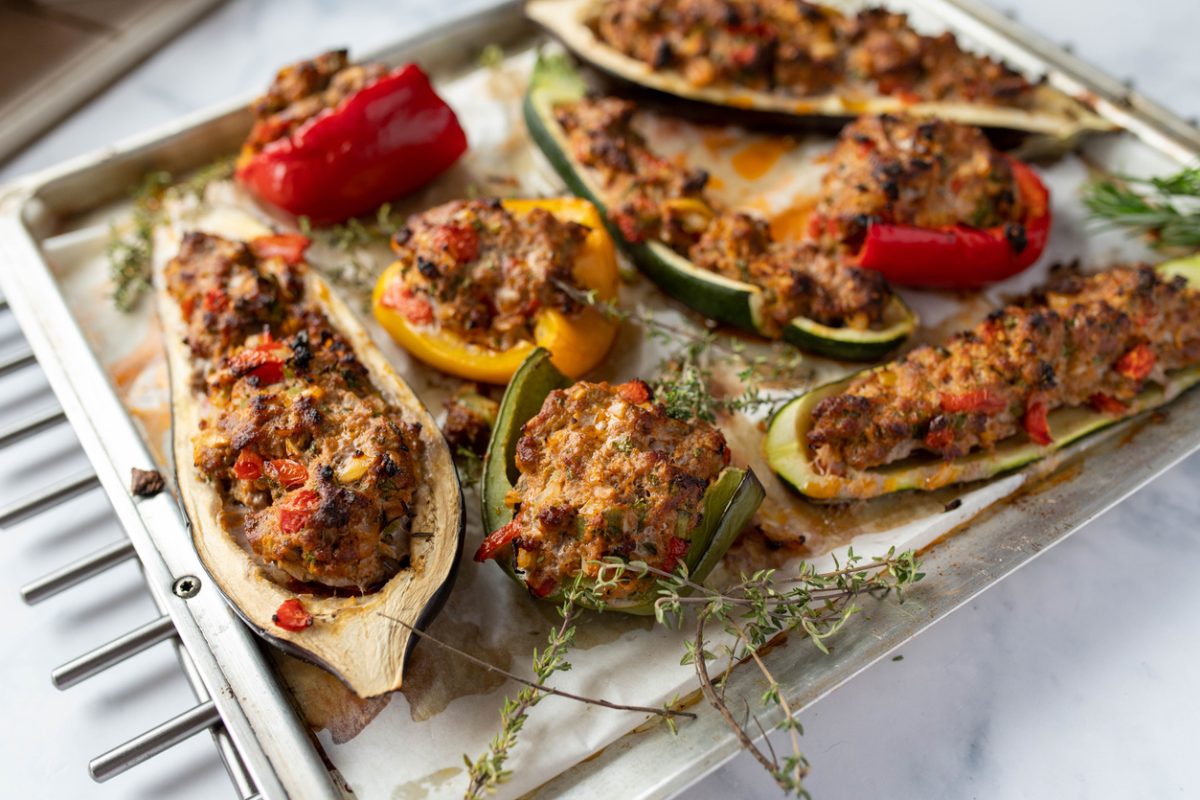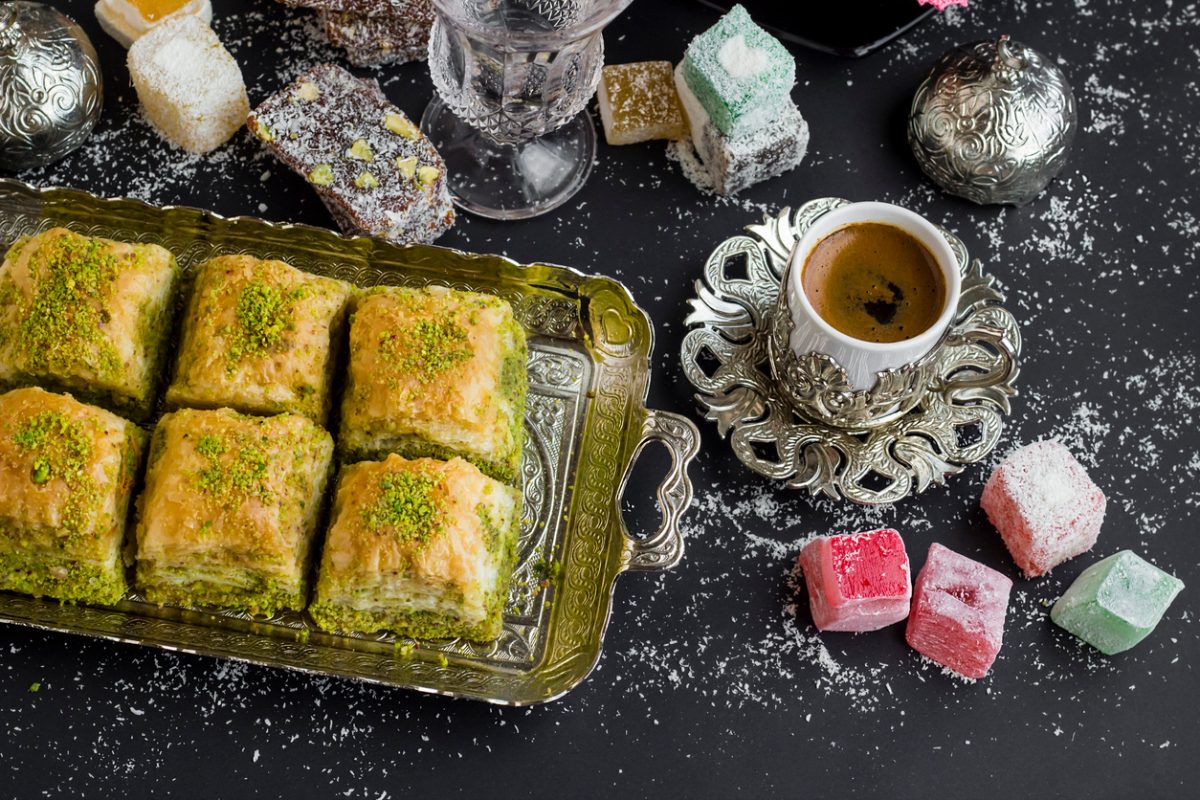Turkey’s cuisine is so rich and varied that it can be worth a whole culinary journey: its dishes stand out for their intense flavor and the variety of recipes, most of which are very healthy thanks to their natural ingredients. very healthy thanks to their natural ingredients.
En esta página te contamos cuáles son sus principales características y qué platos, dulces y bebidas no deberías dejar de probar durante tu estancia en el país.
Before listing the main dishes of Turkish cuisine, it is interesting to mention some general characteristics of the country’s cuisine.
Of course, each region has its own proposals, but there are elements in common in all of them.
In fact, Turkey’s gastronomy has been so influential in recent centuries thanks to the Ottoman empire thanks to the Ottoman Empire that many of its recipes can also be found in other neighboring countries of the Mediterranean Levant and the Middle East.
The vast territory of today’s Turkey has always offered ample opportunities for agriculture, even since Neolithic times.
Therefore, it is not by chance that vegetables are very present in the local cuisine.
In many cases, they are only an accompaniment to the main food, but in other cases they are the real protagonists of the recipes, or even the basis on which to elaborate the rest of the dish, for example, in the case of stuffed vegetables.
Among the most popular and used are the peppers, tomatoes, eggplants or zucchinis, peppers, tomatoes, eggplants or zucchinis.
Y muchas de ellas se comen frías y picadas en trozos, en ensaladas u otras elaboraciones: lettuce, cucumber, etc..
Mención especial merecen las legumesThey are used not only in stews but also in soups and even in salads.
Among all of them, the following stand out lentils.
Meat is another of the pillars of Turkish gastronomy, always respecting the precepts of the the precepts halal of Islamof course.
Therefore, pork, blood-based preparations and the meat of all those animals that have not been slaughtered according to the rules established by this religion, such as pronouncing the name of Allah at the time of death, are totally ruled out.
The most popular meat is perhaps that of lambThis shows the great pastoral tradition of Anatolia.
The veal is also present in Turkish kitchens and on Turkish tables, as well as chicken. chicken.
Muy interesante es detenernos en la forma de cocinar la carne: a la plancha o a la parrilla, en guisos como estofados, cocidas para formar parte de sopas… Pero sobre todo, una seña de identidad de la gastronomía de Turquía es su particular forma de roasting the meatoften skewered on a large on a large rotating skewer (doner).
Although the variety of cheeses in Turkey is not as wide as in other countries and, in fact, the most widely used cheese is the fetaoriginating from neighboring Greece, dairy products are another detail to take into account in the local gastronomy.
For example, as a basic ingredient in the preparation of other products, such as the clarified butter in pastries.
But without a doubt, the dairy product that is omnipresent in Turkish cuisine is the yogurtmainly in liquid form.
In some cases it is used as drinkothers as a base for a cold soup or cold soups or creams vegetables or legumes.
But most of all, it is the main ingredient of your sauces sauces that are so characteristic and that the Turks use to accompany any dish.
Cereals have an important weight in Turkish gastronomy for foods considered as side dishes.
Of course, the breadthe most popular is the ask forwhich is flat and uses wheat flour.
It is widely used in kebab but not only, it can also have sesame seeds on top.
And we cannot forget the riceIt is widely used in many dishes, thanks in part to its economic character.
On other occasions, it is the base of the dish, and there are numerous recipes and varieties ( pilav).
Además, es también muy popular el bulgurbulgur, similar in appearance to rice because of its grain but, in reality, made from cooked wheat.
Although Turkey has more than 7,000 km of coastline, distributed in very different seas (Black, Marmara, Aegean, Mediterranean), the fact is that fish consumption is not comparable to that of other countries in the world.
According to FAO (Food and Agriculture Organization of the United Nations) data, fish consumption is around 20 kg per person per year, with countries well above this average, such as the more than 56 kg of Portugal (the country where it is most consumed) or the more than 45 kg of its followers: Norway, Japan and Spain.
On the other hand, Turks eat around 8 kg of fish per person per yearaccording to some sources.
And those who consume it most are the inhabitants of areas near the coast.
The most popular fish are perhaps the anchovy, mackerel and sea bream.
Además, el consumo de marisco nunca ha sido muy elevado, aunque en los últimos años está experimentando un crecimiento, especialmente en frituras, como los mussels and squid.
The variety of climates and ecosystems of present-day Turkey has favored the existence of numerous and varied fruit trees which, logically, have been exploited in the local gastronomy.
They are especially present in areas with more temperate climates and in coastal environments, such as Bursa ( peaches), Smyrna (figs and raisins) or in Antalya (citrus fruits such as oranges and mandarins).
Las pears And all this and much more can be found in the markets of Istanbul, where products from all regions arrive.
The same goes for dried fruits and nuts: in the past, they served as a simple and inexpensive snack when sweets were not so widespread.
In fact, they are abundantly used in confectionery, which can perhaps be considered a Persian heritage, as this is one of the distinctive features of that culinary tradition. Walnuts, pistachios, almonds or hazelnuts are some of the most important are some of the most important.
But what makes Turkish cuisine unique is not only the raw materials mentioned above, but above all the intense aroma and flavor thanks to the abundant use of spices.
This has been the case for centuries, since the Ottoman Empire and its predecessors sought to exploit its strategic position in the spice trade from the East.
So it is no coincidence that the Spice Bazaar was established in Istanbul in the 17th century.
In addition, the toponymy of some cities reminds us of the importance of the local production of some of them, such as Safranbolu, where the saffron since time immemorial.
The list of spices, flavoring herbs and condiments used in Turkey is endless, and sometimes they are mixed in preparations whose recipe is kept secret by their producers.
In addition to saffron, one can mention the coriander, caraway, aleppo pepper, isot, peppermint, sumac, coriander, coriander, caraway, peppercorns, peppercorns, coriander, caraway, peppermint, peppermint, sumac…
Finally, it is interesting to mention that one of the ingredients that brings Turkey’s gastronomy closer to the Mediterranean diet is olive oil.
In fact, this country is one of the world’s largest producers, behind only the four major southern European countries: Spain, Italy, Portugal and Greece.
But olive oil is not only produced for export, far from it: it is an oil that is widely used in local cuisine, not only for frying but also for seasoning numerous dishes.
In fact, on some occasions (for example in drought contexts, such as in 2023), a ban has been decreed on the export of olive oil outside Turkey, with the aim of guaranteeing the national supply, which shows its importance in the Turkish diet.

Now that you have a general idea of what Turkey’s gastronomy is like, it’s time for the best part: getting to know the main local dishes and taking note of them so you can taste them when you visit the country.
This is a list with the most important onesalthough in reality it could be much more extensive:
It must be said that some of these dishes, or some of the foods that are part of them, are often offered in the form of a mezeThey are appetizers which are offered combined with each other and in small quantities, as a snack and usually cold.
However, depending on the occasion, lunches or dinners can be organized in this way, sometimes for special occasions with the most elaborate and sophisticated meze.

The confectionery is, like the rest of Turkey’s gastronomy, very varied and highly influenced by its surroundings.
In fact, many of the sweets listed below can also be found in other countries, with greater or lesser variation.

Despite being a Muslim-majority country, both beer and wine are produced and consumed in Turkey, and in some cases with a more than acceptable quality.
However, it cannot be said that they are the most popular beverages, precisely for cultural reasons.
On the other hand, the Turks are very fond of other beverages, which you should not miss during your trip.
For example, Turkish Turkish teawhich is a very strong variety of black tea.
It is known as çay and its origin is mainly from the Black Sea, where climatic and geographical conditions (high humidity, fertile soil) favor its production.
Its color is deep red and it is usually served in crystal glasses at a very hot temperature, while its preparation is usually carried out in large metal teapots, some of them really bulky.
Beet sugar is often used to sweeten this strong Turkish tea.
The same popularity has the Turkish coffeealso called Armenian coffee, with a very intense aroma and flavor.
Its variety is usually Arabica and its grinding is so thorough that it practically resembles flour.
In fact, it is cooked directly in the container with hot water, without filters, which explains why large coffee grounds are generated.
They are prepared in small copper containers ( cevze) and is served in small cups, espresso type.
A glass of water is usually offered as an accompaniment, as well as a Turkish delight.
On the other hand, a more traditional alcoholic beverage even more traditional than wine and beer is raki. rakiwhich spread in the times of the Ottoman Empire.
It is a type of grape anise and raisinand it is usually drunk as an accompaniment to the meze.
Su característico color blanquecino le da su apodo popular de ‘leche de león’.
Finally, to end on a refreshing note, mention may be made of the delicious Turkish milkshakes Turkish milkshakescalled ayran.
Su base es una mezcla de yogur y agua, coronado con una densa capa de espuma.
Puede estar aromatizado de diferentes maneras, por ejemplo con limón, menta o incluso ajo, según los ingredientes empleados.
Por supuesto, el periodo ideal para tomarlos es el verano, pero no sólo.